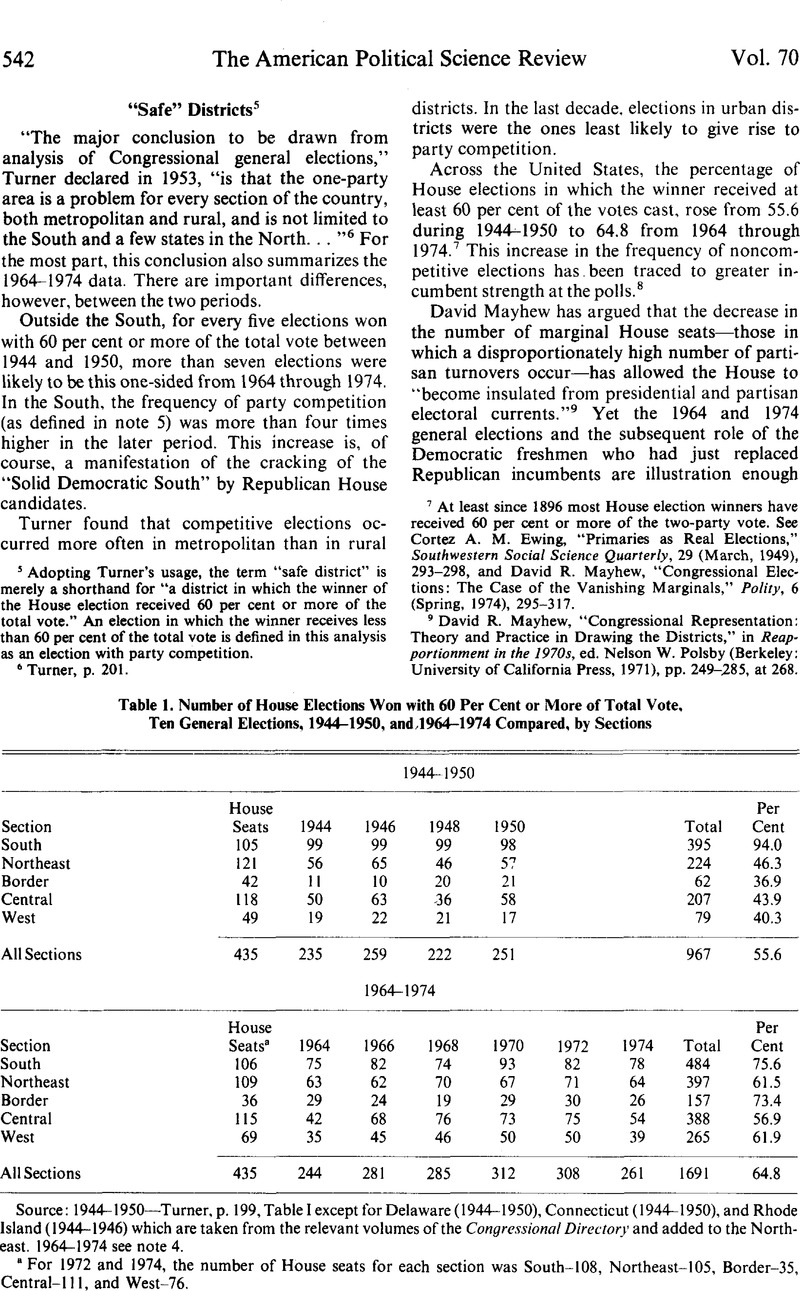No CrossRef data available.
Article contents
Abstract

- Type
- Communications
- Information
- Copyright
- Copyright © American Political Science Association 1976
References
6 Turner, p. 201.
7 At least since 1896 most House election winners have received 60 per cent or more of the two-party vote. See Ewing, Cortez A. M., “Primaries as Real Elections,” Southwestern Social Science Quarterly, 29 (March, 1949), 293–298Google Scholar, and Mayhew, David R., “Congressional Elections: The Case of the Vanishing Marginals,” Polity, 6 (Spring, 1974), 295–317CrossRefGoogle Scholar.
9 Mayhew, David R., “Congressional Representation: Theory and Practice in Drawing the Districts,” in Reapportionment in the 1970s, ed. Polsby, Nelson W. (Berkeley: University of California Press, 1971), pp. 249–285, at 268Google Scholar.
10 Key, V. O. Jr., Politics, Parties, and Pressure Groups, 5th ed. (New York: Crowell, 1964), p. 435Google Scholar.





Comments
No Comments have been published for this article.